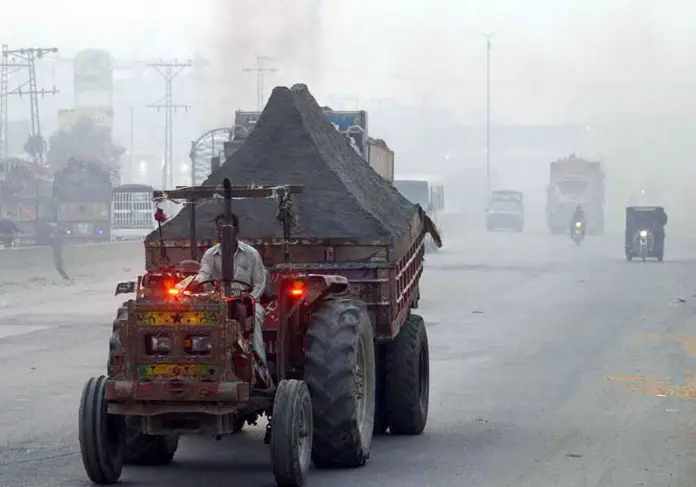A type of air pollution that is caused by a mixture of smoke and fog is called smog.
The term was first coined by Dr Henry Antoine Des Voeux in his 1905 paper – Fog and smoke. He used the term to describe polluted atmosphere in many British towns. The kind of sulphurous smog, which is also called London smog, results from a high concentration of sulphur oxides in the air and is caused by the use of sulphur-bearing fossil fuels.
Dampness and concentration of suspended particles further aggravate this kind of smog. In 1952, the clouds of smog, which resulted from coal burning covered London, England. More than 4,000 people died of respiratory ailments aggravated by smog. It was so severe that roads, railways and airports were shut down.
The photochemical smog is produced when sunlight reacts with nitrogen oxides, which are emitted from vehicles and at least one volatile organic compound (VOC) in the atmosphere.
The photochemical smog is commonly produced when vehicular emissions from burning gasoline and diesel come in contact with sunlight. It occurs mostly in densely populated areas with a lot of vehicular traffic. This type of smog is often referred to as ‘Los Angeles’ smog. On July 26, 1943, severe smog was observed over Los Angeles in California. The residents believed that had come under a chemical attack from an adversary. On the other hand, farmers put crop residue on fire, which becomes the prime cause of smog. In India’s Delhi, smog is caused and aggravated by stubble burning in its surrounding agricultural areas.
Big cities where there are traffic congestions and industries are more prone to smog. Industrial cities, which are surrounded by mountains, are more likely to be subjected to severe smog. Smog is dangerous to human health. It causes sickness and shortens lifespan. It is unhealthy for animals and plants as well. It creates a very bad view of the sky, the colour of which changes from blue to brown or grey.
Smog directly affects the air quality index (AQI). The AQI is a number used by government agencies to measure the air pollution levels. It is a yardstick, which runs from zero to 500. The higher the AQI value, the greater the level of air pollution and the greater the health concerns. The AQI is divided into six bands with each band showing a different level of air quality and health concern. The average AQI for Lahore crossed the figure of 300 earlier this month, implying that there exists a health emergency.
Air quality in Lahore drops to hazardous level in the winter season from November to February mainly because of traffic congestions and stubble burning in the city’s surrounding. In November 2019, Lahore remained second ‘most polluted city of the world’ after New Delhi. For some days, it surpassed the Indian capital. According to a report titled ‘World’s most polluted cities 2020’, Lahore remained the 18th ‘most polluted city’ of the world, while Faisalabad was on 29th position.
In order to curb this environmental issue, many countries have adopted different measures. Restrictions are being imposed on factories to regulate coal burning. Smog is not only an environmental problem but it is a kind of a hazard that requires a responsible civic response from the community at large. People should adopt a healthy lifestyle. They should walk more and drive less. Carpooling is a good idea that would reduce traffic on the roads.
In a country like Pakistan, it is the need of the hour to improve the public transport system. The culture of running bicycles should be promoted by our opinion leaders and celebrities. Smoke emitting vehicles should not be allowed to ply roads. Each vehicle should get an engine fitness certificate and then be allowed to be driven on roads. An awareness campaign should be launched to educate farmers about the harmful effects of smog, and they should be advised against burning crop residues. Legal action should be taken against those who burn crop residues and cause smog.
It is the need of the hour that the real time air quality data is published and awareness campaigns are launched to curb air pollution. Wearing masks is not only the basic preventive measure for the Covid-19 pandemic but it also remains the best prevention strategy to avoid the harmful effects of smog and air pollution. Certain electronic gadgets like air purifiers may be used to clean air in closed spaces like rooms and vehicles. People may avoid doing exercise outdoors during smog. The government should press brick kiln owners to use zigzag technology, which releases fewer emissions than the traditional apparatus used in brick kilns. Smog has become a great environmental hazard. It has created an emergency-like situation in many countries, including Pakistan. The government and the community should join hands and take steps to tackle this emergency before it is too late.







